-
 Bitcoin
Bitcoin $105,278.9859
4.61% -
 Ethereum
Ethereum $2,414.7741
8.20% -
 Tether USDt
Tether USDt $1.0007
0.05% -
 XRP
XRP $2.1600
7.53% -
 BNB
BNB $639.5433
3.75% -
 Solana
Solana $144.3830
9.37% -
 USDC
USDC $1.0001
0.02% -
 TRON
TRON $0.2742
3.84% -
 Dogecoin
Dogecoin $0.1640
8.57% -
 Cardano
Cardano $0.5811
7.49% -
 Hyperliquid
Hyperliquid $37.2466
5.28% -
 Sui
Sui $2.8243
14.84% -
 Bitcoin Cash
Bitcoin Cash $460.8816
2.22% -
 Chainlink
Chainlink $12.9580
11.75% -
 UNUS SED LEO
UNUS SED LEO $9.1359
1.23% -
 Avalanche
Avalanche $18.2302
10.30% -
 Stellar
Stellar $0.2463
7.80% -
 Toncoin
Toncoin $2.9151
7.18% -
 Shiba Inu
Shiba Inu $0.0...01163
9.79% -
 Hedera
Hedera $0.1532
14.01% -
 Litecoin
Litecoin $85.3310
6.29% -
 Monero
Monero $308.8215
2.90% -
 Ethena USDe
Ethena USDe $1.0007
0.03% -
 Polkadot
Polkadot $3.4259
9.42% -
 Dai
Dai $1.0002
0.01% -
 Bitget Token
Bitget Token $4.1742
3.19% -
 Uniswap
Uniswap $6.8272
8.53% -
 Pepe
Pepe $0.0...09939
12.29% -
 Pi
Pi $0.5358
6.03% -
 Aave
Aave $257.3092
12.83%
Is the large volume limit drop at the bottom a fund accumulation? How to confirm the reversal later?
A large volume limit drop at the bottom may signal capitulation or accumulation, but confirmation through on-chain data, volume analysis, and technical patterns is essential before assuming a reversal.
Jun 24, 2025 at 01:42 pm

Understanding Large Volume Limit Drops at the Bottom
A large volume limit drop refers to a situation where the price of a cryptocurrency falls sharply, hitting its lower circuit breaker or minimum daily trading threshold, and is accompanied by unusually high trading volume. When this occurs at what appears to be the bottom of a downtrend, it raises questions about whether institutional or large-scale investors are accumulating assets.
In crypto markets, such scenarios often spark speculation about fund accumulation, especially when these drops are followed by a reversal in trend. However, identifying whether this activity stems from genuine buying interest requires careful technical and on-chain analysis.
Large volume limit drops can signal panic selling, capitulation, or strategic dumping by whales.
What Is Fund Accumulation?
Fund accumulation typically refers to the process where large players (such as hedge funds, venture capitalists, or whale traders) slowly buy up assets over time without significantly affecting the market price. This behavior is usually marked by subtle patterns like increased order book depth, steady inflows into exchanges, and gradual increases in on-chain activity.
When a limit down event coincides with these characteristics, it might suggest that smart money is stepping in to buy the dip. However, not all sharp declines indicate accumulation. In many cases, they reflect fear-driven selling or manipulative tactics by large holders.
Accumulation zones often feature reduced volatility, increasing volume on small bounces, and sustained support levels despite downward pressure.
How to Confirm a Reversal After a Limit Drop
Identifying a potential reversal after a significant drop involves analyzing both on-chain data and traditional technical indicators. Here’s how you can approach confirmation:
- Volume Analysis: Look for a sudden increase in volume during the decline, followed by a period of consolidation or rising volume on smaller upward moves.
- Order Book Depth: Check if bids start to accumulate at certain price levels below the current market price, indicating strong support building.
- On-Chain Metrics: Use tools like Glassnode or Santiment to monitor metrics such as “Exchange Netflow” or “Holder Trends.” A decrease in outflows from exchanges could imply accumulation.
- Price Action Confirmation: Wait for a clean break above key resistance levels or moving averages (e.g., 50-day EMA), ideally supported by bullish candlestick patterns like engulfing candles or hammer formations.
- Market Sentiment Indicators: Analyze social sentiment, funding rates, and open interest to gauge whether bearishness is waning.
A true reversal is confirmed when buyers consistently defend a price zone and push higher with increasing momentum.
Using On-Chain Tools to Detect Accumulation
Several blockchain analytics platforms offer insights into the behavior of large holders. These tools track wallet movements, exchange inflows/outflows, and long-term holder behavior.
Here’s how to use them effectively:
- Check Exchange Inflows/Outflows: If coins are being moved off exchanges and stored in wallets, it may suggest long-term holding intentions.
- Monitor Whale Transactions: Track large transactions (>100 BTC equivalent) using services like Whale Alert or IntoTheBlock.
- Analyze Supply Distribution: A shift in supply distribution toward long-term holders can indicate accumulation rather than speculative trading.
- Observe Miner Behavior: Miners selling aggressively can depress prices temporarily, but if their sell-offs stop and mining difficulty stabilizes, it may signal a bottom forming.
Tools like Glassnode Studio provide detailed dashboards showing real-time accumulation trends across different asset classes.
Technical Patterns That Signal Reversals
Certain candlestick and chart patterns can help confirm a reversal after a large volume drop. Here are some to watch for:
- Bullish Engulfing Pattern: A large green candle completely "engulfs" the previous red candle, signaling a shift in momentum.
- Hammer Candlestick: A long lower wick indicates rejection of lower prices and potential buying pressure.
- Double Bottom Formation: A W-shaped pattern suggesting two failed attempts to break a key support level.
- Moving Average Crossovers: A golden cross (short-term MA crossing above long-term MA) can act as a strong reversal signal.
- RSI Divergence: If RSI makes a higher low while price makes a lower low, it suggests hidden strength among buyers.
These patterns gain more significance when backed by volume surges and positive on-chain signals.
Frequently Asked Questions
Q: Can a limit down always be considered a buying opportunity?
No. While some limit downs mark bottoms, others can lead to further declines. It's essential to wait for confirmation through volume, on-chain signals, and technical patterns before considering entry.
Q: How reliable are on-chain signals for detecting fund accumulation?
On-chain signals are highly valuable but should not be used in isolation. They work best when combined with traditional technical analysis and sentiment tracking.
Q: What timeframe should I focus on for confirming a reversal?
Most reversals become clearer on the 4-hour and daily charts. Shorter timeframes can be noisy and prone to false signals.
Q: Are whale transactions the same as fund accumulation?
Not necessarily. Whale transactions can include transfers between wallets, profit-taking, or manipulation. Accumulation implies consistent, strategic buying over time.
Disclaimer:info@kdj.com
The information provided is not trading advice. kdj.com does not assume any responsibility for any investments made based on the information provided in this article. Cryptocurrencies are highly volatile and it is highly recommended that you invest with caution after thorough research!
If you believe that the content used on this website infringes your copyright, please contact us immediately (info@kdj.com) and we will delete it promptly.
- Celestia Under Fire: Navigating the $100M FUD Storm
- 2025-06-24 16:45:12
- XLM Price, Bitcoin Solaris, and Returns Prediction: Navigating the Crypto Landscape
- 2025-06-24 16:25:13
- Dogecoin Price Prediction: Will DOGE Bounce Back by June 25?
- 2025-06-24 16:45:12
- Adam Schiff's COIN Act: Curbing Crypto Endorsements and Conflicts of Interest
- 2025-06-24 16:25:13
- Bitcoin, Ethereum, Ceasefire: Crypto Markets React to Unexpected Geopolitical Developments
- 2025-06-24 17:05:12
- PIPE Transactions, On-Chain Protocols, and Market Analysis: A New Era for Crypto?
- 2025-06-24 17:24:16
Related knowledge
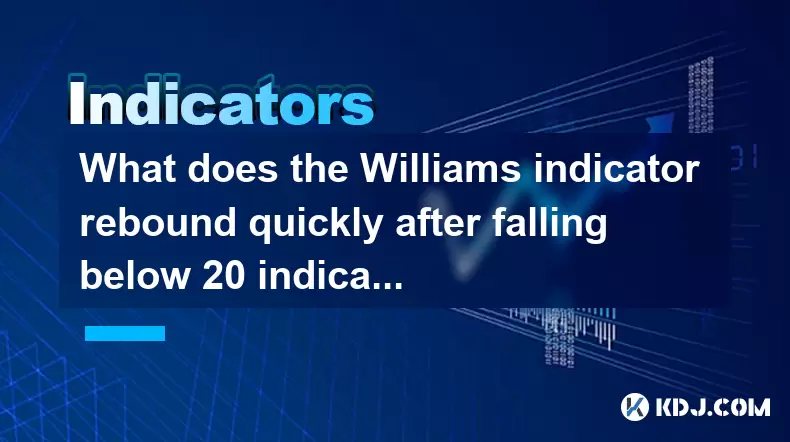
What does the Williams indicator rebound quickly after falling below 20 indicate?
Jun 24,2025 at 04:49pm
Understanding the Williams %R IndicatorThe Williams %R indicator, also known as Williams Percent Range, is a momentum oscillator used in technical analysis to identify overbought and oversold conditions in financial markets, including cryptocurrencies. It was developed by Larry Williams and typically operates on a scale from 0 to -100. In the context of...
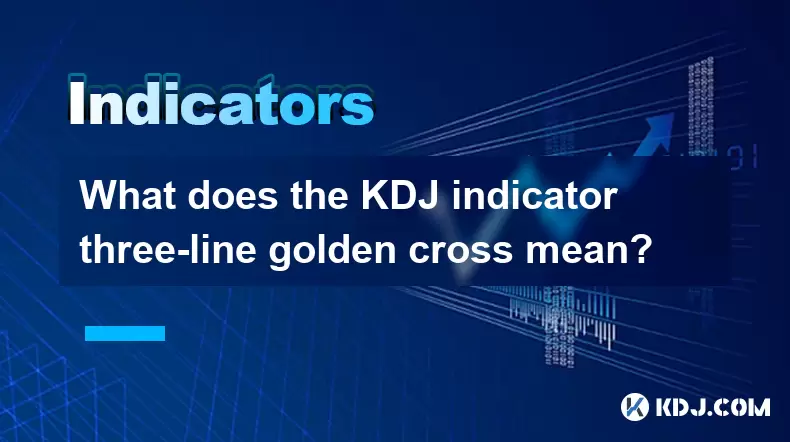
What does the KDJ indicator three-line golden cross mean?
Jun 24,2025 at 05:28pm
Understanding the KDJ Indicator in Cryptocurrency TradingThe KDJ indicator is a technical analysis tool widely used in cryptocurrency trading to identify potential buy and sell signals. It combines elements of two other indicators: the Stochastic Oscillator and the J line, which acts as a signal line. The KDJ consists of three lines — K, D, and J — each...
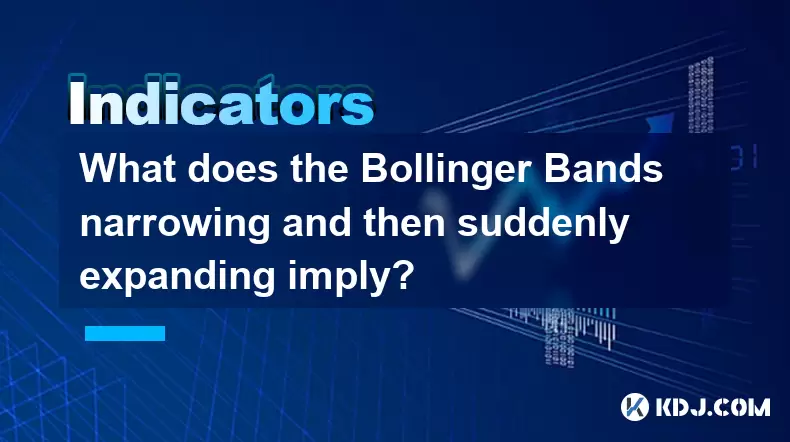
What does the Bollinger Bands narrowing and then suddenly expanding imply?
Jun 24,2025 at 05:56pm
Understanding Bollinger Bands in Cryptocurrency TradingBollinger Bands, a popular technical analysis tool, are widely used in cryptocurrency trading to assess price volatility and potential trend reversals. The indicator consists of three lines: a Simple Moving Average (SMA) in the middle, typically set at 20 periods, with two outer bands that represent...
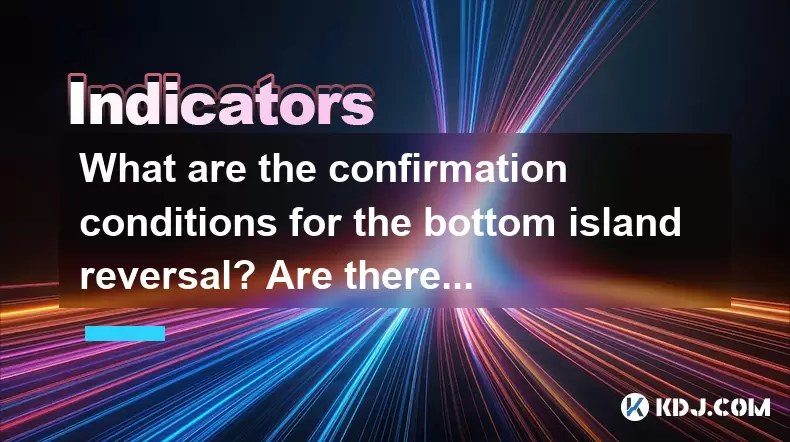
What are the confirmation conditions for the bottom island reversal? Are there many false signals?
Jun 24,2025 at 04:56pm
Understanding the Bottom Island Reversal PatternThe bottom island reversal is a rare but significant candlestick pattern that indicates a potential shift from a downtrend to an uptrend. It typically forms when there's a gap down followed by a gap up, leaving a 'blank' space on the chart — the island — which is isolated from the surrounding price action....
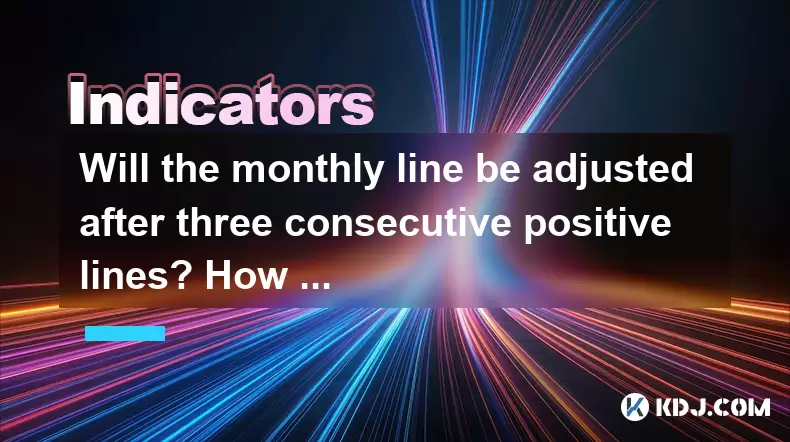
Will the monthly line be adjusted after three consecutive positive lines? How big is the callback range in general?
Jun 24,2025 at 05:21pm
Understanding Monthly Candlestick Patterns in CryptocurrencyIn the realm of cryptocurrency trading, monthly candlestick patterns play a crucial role in analyzing long-term price behavior. A monthly chart provides traders with a macro view of how an asset has performed over extended periods. When observing three consecutive positive (green) candles on th...
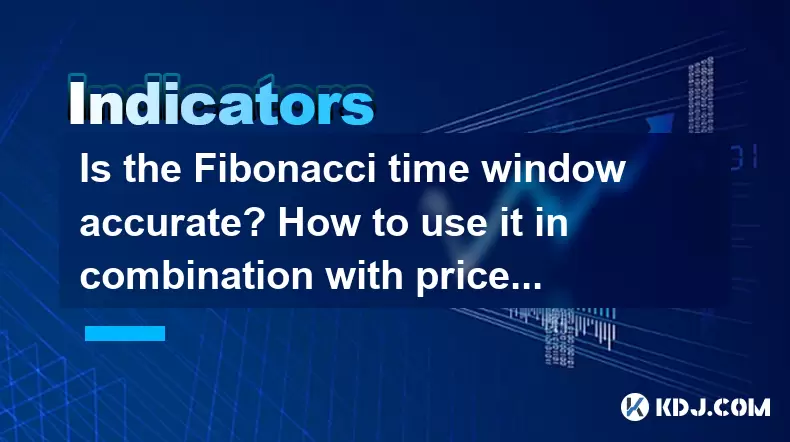
Is the Fibonacci time window accurate? How to use it in combination with price patterns?
Jun 24,2025 at 03:49pm
Understanding the Fibonacci Time Window ConceptThe Fibonacci time window is a technical analysis tool derived from the Fibonacci sequence, commonly used in financial markets, including cryptocurrency trading, to predict potential reversal or continuation points based on time rather than price. Unlike traditional Fibonacci retracement levels that focus o...

What does the Williams indicator rebound quickly after falling below 20 indicate?
Jun 24,2025 at 04:49pm
Understanding the Williams %R IndicatorThe Williams %R indicator, also known as Williams Percent Range, is a momentum oscillator used in technical analysis to identify overbought and oversold conditions in financial markets, including cryptocurrencies. It was developed by Larry Williams and typically operates on a scale from 0 to -100. In the context of...

What does the KDJ indicator three-line golden cross mean?
Jun 24,2025 at 05:28pm
Understanding the KDJ Indicator in Cryptocurrency TradingThe KDJ indicator is a technical analysis tool widely used in cryptocurrency trading to identify potential buy and sell signals. It combines elements of two other indicators: the Stochastic Oscillator and the J line, which acts as a signal line. The KDJ consists of three lines — K, D, and J — each...

What does the Bollinger Bands narrowing and then suddenly expanding imply?
Jun 24,2025 at 05:56pm
Understanding Bollinger Bands in Cryptocurrency TradingBollinger Bands, a popular technical analysis tool, are widely used in cryptocurrency trading to assess price volatility and potential trend reversals. The indicator consists of three lines: a Simple Moving Average (SMA) in the middle, typically set at 20 periods, with two outer bands that represent...

What are the confirmation conditions for the bottom island reversal? Are there many false signals?
Jun 24,2025 at 04:56pm
Understanding the Bottom Island Reversal PatternThe bottom island reversal is a rare but significant candlestick pattern that indicates a potential shift from a downtrend to an uptrend. It typically forms when there's a gap down followed by a gap up, leaving a 'blank' space on the chart — the island — which is isolated from the surrounding price action....

Will the monthly line be adjusted after three consecutive positive lines? How big is the callback range in general?
Jun 24,2025 at 05:21pm
Understanding Monthly Candlestick Patterns in CryptocurrencyIn the realm of cryptocurrency trading, monthly candlestick patterns play a crucial role in analyzing long-term price behavior. A monthly chart provides traders with a macro view of how an asset has performed over extended periods. When observing three consecutive positive (green) candles on th...

Is the Fibonacci time window accurate? How to use it in combination with price patterns?
Jun 24,2025 at 03:49pm
Understanding the Fibonacci Time Window ConceptThe Fibonacci time window is a technical analysis tool derived from the Fibonacci sequence, commonly used in financial markets, including cryptocurrency trading, to predict potential reversal or continuation points based on time rather than price. Unlike traditional Fibonacci retracement levels that focus o...
See all articles
























































































